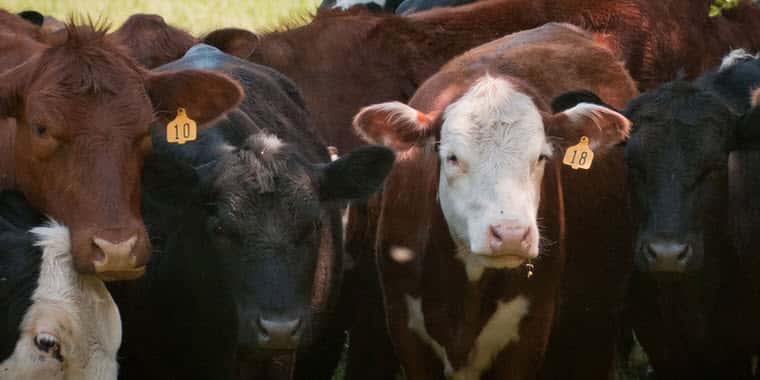The USDA semi-annual Cattle Inventory Report revealed that the U.S. beef cow herd is shrinking at the fastest rate since the last widespread drought in 2012. As of January 1, 2022, the total number of cattle in the U.S. totaled 91.9 million head, down 2% from the previous year.
The number of beef cows nationwide was also down 2% at 30.1 million head, the fewest number of cows since 2015. 2021 marked the third year of contraction in the beef cow herd. The contraction phase of the cattle cycle began in 2019, when the herd peaked at 31.7 million cows. Reduced margins for cow-calf producers caused a gradual drop in numbers in 2019 and 2020.
That liquidation was accelerated in 2021 as much of the Western U.S. battled severe drought. Across Montana, North Dakota, South Dakota, and Wyoming the overall cow herd shrank by 320,000 head in the past year. With just under 1.3 million beef cows in Montana, the herd is now at its smallest level since 1988. The Montana herd shrank by 6 percent or 90,000 head. Beef cow numbers declined 11% in South Dakota, down 3% in Wyoming and decreased 2% in North Dakota.
The Cattle Inventory Report is watched closely by many in the industry as it provides a detailed look at where the cow herd is at in the cattle cycle and producers can expect going forward as far as herd expansion or contraction is concerned.
Given that for 3 consecutive years, ranchers have produced smaller calf crops, the supply and demand dynamics of the industry should be supportive to cattle prices. Of course, the beef industry was one of the most heavily disrupted by the pandemic, so that has slowed the rally in prices. However, the cattle feeding sector is gaining currentness and with the herd continuing to shrink, leverage in the beef industry should begin to shift more rapidly in 2022 away from the packing segment over to cattle producers.
The inventory data suggests that the cow herd will continue to shrink for at least another 1 to 2 years. Of course, that heavily depends on the drought situation. The report found that beef replacement heifers were down 3% from 2021 at 5.61 million head. Due to the drought and increased feed costs, more heifers were sent to feedyards and not retained within the cow herd, which will likely lead the cattle industry to contract further in 2022.
Some producers feel that this report does not fully represent all the impacts of the widespread drought and the herd could be shrinking at a faster rate. With drought challenging breed up rates and producer bottom lines, more liquidation could be on the horizon without a significant break in the drought.
However, there are plenty of reasons for cattlemen to be optimistic about the long term direction of the industry. Beef demand remains very strong in the U.S. and abroad. Record high retail beef prices have not stopped U.S. consumers from buying beef and in 2021, U.S. beef exports set new records, breaking the $10 billion mark.
Despite many disruptions to packing plants and the intense frustration ranchers feel with the bottleneck at the processing stage of the beef supply chain, slaughter rates are normalizing and finally getting above year ago levels. Currently, there are plains for a significant increase in packing capacity and the Biden Administration has pledged $1 billion in grants and loans to expand new and existing packing facilities.
Those factors should combine to yield strong prices for all classes of cattle through the middle of the decade.
###
Northern Ag Network


